Let's slice through the noise: success in SaaS isn't just about your product—it's about strategic marketing that sticks.
Whether you're a fledgling startup or a scaling veteran, this article is tailored for you. If converting prospects into loyal users feels like a puzzle and customer retention seems like a maze, we're here to clarify. We'll outline proven SaaS marketing strategies for substantial growth and solid retention.
By reading on, you'll gain insights into effective tactics that can significantly improve how you attract and maintain your customer base, ultimately boosting your business's longevity and success.
Understanding SaaS Marketing Fundamentals
SaaS marketing is a domain that focuses on promoting and selling subscription-based software services.
Unlike traditional marketing strategies focusing on one-time purchases, SaaS marketing emphasizes building long-term customer relationships. At its core, the fundamental goal is to acquire, retain, and grow customer relationships over time. The recurring revenue model of SaaS businesses demands this continuous cycle, which is why SaaS marketing strategies are crafted differently.
Moreover, the SaaS market often experiences rapid changes in technology and customer expectations, which means that SaaS marketing strategies must be agile and data-driven to adapt quickly. The focus is less on the immediate sale and more on demonstrating the long-term benefits and ROI of the SaaS product, which is why metrics like customer lifetime value (CLTV) and churn rate become focal points in SaaS marketing efforts. This strategic approach fosters growth and engagement by aligning marketing efforts closely with customer success.
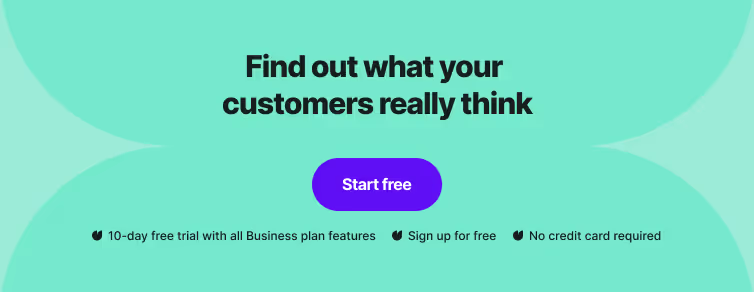
Do it before choosing your SaaS marketing strategies
Creating a targeted SaaS marketing plan is critical for connecting with your ideal customers and standing out in a competitive market. This plan will guide you in attracting, engaging, and retaining users by focusing on specific strategies unique to SaaS offerings.
Research buyer persona
A successful SaaS marketing strategy hinges on precisely identifying your potential customers. Knowing who will benefit most from your software is the first step in crafting messages that resonate and convert. The target audience for a SaaS product isn't one-size-fits-all; it varies widely depending on the service offered and the problems it solves.
To identify your target audience accurately, analyze your customer base to find common characteristics and pain points your product addresses. This data-driven approach will reveal insights into who sees your product as valuable and why. From there, develop detailed buyer personas that represent your ideal customers, considering demographic factors like industry, job role, company size, and their specific challenges.
Understanding the decision-making process of these personas is crucial. For a SaaS business, stakeholders may range from end-users to IT managers or even C-level executives, each with their concerns and criteria for choosing a software service. Tailoring your marketing strategy to address the diverse needs of these decision-makers will ensure that your marketing efforts are targeted and effective.
By clearly defining your target audience, you can optimize your marketing resources and create more impactful, relevant content that aligns with your audience's expectations and increases the likelihood of long-term customer engagement.
Check on your competition
You must know your competition to build a SaaS marketing strategy that effectively differentiates your product. Conduct a thorough analysis of competitors to discover their strengths and weaknesses. Look at their market positioning, pricing, features, and online customer reviews. This market research helps you identify gaps in the market and opportunities for your SaaS product to excel.
➡️ Assess the competition
Begin by cataloging your direct and indirect competitors. Analyze their offerings, market positioning, pricing, and go-to-market strategies. Tools and frameworks like SWOT analysis can help dissect competitors' strengths, weaknesses, opportunities, and threats. This deep dive uncovers gaps in the market that you can exploit and helps refine your value proposition.
➡️ Learn from others
Look at your competitors' marketing channels and the type of content that gains traction. Social listening can provide insights into the conversations happening around their brands and the customer reviews they receive. This information is invaluable when building your marketing strategy, as it can guide you on what to emulate and what pitfalls to avoid.
Define your value proposition
Your value proposition communicates the unique benefits your SaaS business provides. It should be clear, concise, and focused on the outcomes that users will experience. It's not just about listing features; it's about translating those features into real-world advantages for your users.
Consider what sets your SaaS product apart – be it innovation, customer service, or user experience – and ensure that this uniqueness is at the forefront of your messaging.
Choose the right SaaS pricing model
A suitable pricing model is crucial for SaaS businesses as it directly affects customer acquisition and retention.
➡️ Consider customer usage
Evaluate how customers will use your product. A tiered model may be optimal for heavy users, while a per-user model could suit products with individual user licenses.
➡️ Evaluate product maturity
For established products, flat-rate pricing might be straightforward and appealing. Startups might benefit from usage-based models that attract a broader user base.
➡️ Test and iterate
Implement A/B testing for your pricing pages and conduct customer surveys to gather direct feedback on pricing preferences. Use data-driven insights to refine your pricing strategy over time.
The right pricing model is a key lever in your SaaS marketing strategy, influencing both initial conversion and long-term customer lifetime value. Choose a model that aligns with customer usage patterns and your product's stage in the lifecycle. Be ready to adapt as you gather more data on customer preferences and behaviors.
10 best SaaS marketing strategies
1. SaaS content marketing
Embracing SaaS content marketing is vital for growth, focusing on crafting content that precisely addresses the needs of your audience. It involves a strategic approach to developing material that is informative and aligned with the questions and challenges your ideal customers face.
➡️ Make your SEO bulletproof
Speaking about content marketing, we need to start with good SEO practices. To ensure your content reaches the right audience, follow these basic SEO steps:
- Keyword research: Run thorough content marketing research—identify your target customers' keywords and phrases in their online searches.
- On-page optimization: Incorporate these keywords naturally into your content, including titles, headings, and throughout the body text.
- Meta descriptions: Write compelling meta descriptions with keywords encouraging click-throughs from search engine results pages.
- User experience: Structure your content for readability with clear headings, short paragraphs, and bullet points to enhance user engagement.
- Mobile optimization: Ensure your content is mobile-friendly, as search engines favor mobile-optimized sites in their rankings.
- Backlinks: Create authoritative and shareable content, encouraging backlinks from reputable sites, which can improve your site's authority and search ranking.
By creating SEO-optimized content that addresses the specific needs of your audience, you not only increase your visibility in search engines and establish your SaaS as a knowledgeable and helpful leader in the industry.
➡️ Craft targeted solutions
Begin by creating content that solves a specific problem, ensuring it directly addresses the issues identified during your audience research. Your content should blend utility and relevance, serving as a go-to resource for your audience's needs.
➡️ Share customer success stories
Customer case studies showcase real-world success stories, providing credible evidence of your SaaS product's impact. They build trust by detailing specific customer achievements, serving as persuasive testimonials that resonate with prospects and validate the effectiveness of your solution within a SaaS marketing strategy.
➡️ Use video marketing
Video marketing enhances your content marketing by delivering dynamic and digestible content. It can explain complex features succinctly, showcase software in action, and increase engagement, leading to higher conversion rates and improved SEO through increased on-page time and shareability.
➡️ Take advantage of user-generated content
User-generated content (UGC) authenticates your SaaS offering by featuring customer experiences and testimonials. It fosters community engagement and provides relatable proof of your product's value. Source UGC from social media, customer reviews, and forums to enrich your content strategy and boost organic reach.
2. Master B2B SEO for SaaS companies
SEO is a cornerstone of any effective SaaS marketing plan because it connects your solution with users actively seeking your product or related information.
For SaaS companies, SEO is vital in driving organic traffic, building brand authority, and lowering customer acquisition costs. It helps your product stand out in a crowded market and reach B2B decision-makers. Remember to focus on these areas:
➡️ Keyword strategy: Target long-tail, industry-specific keywords that match your ideal customer profile and their search intent.
➡️ Quality content: Create comprehensive content that addresses user pain points, offers solutions, and positions your product as the answer.
➡️ Technical SEO: Ensure your website is technically optimized for search engines with a fast load time, mobile responsiveness, and structured data.
Stay informed about the latest SEO trends and algorithm updates by following authoritative SEO resources and implementing changes quickly to maintain your rankings.
A strong SEO foundation can lead to sustained organic growth and is particularly effective for SaaS companies due to the long buying cycles and the need for ongoing education in the B2B space. Regularly updated, high-quality content and a solid technical SEO strategy ensure your SaaS product remains visible and attractive to your target audience.
3. Free Trials
Implementing free trials is a strategic move in a SaaS marketing strategy that can significantly increase conversion rates to paid subscriptions. The structure of these trials—whether freemium, limited with opt-in, or limited with opt-out—can affect their effectiveness in converting users.
➡️ Opt-in vs. opt-out trials
Opt-in trials typically see lower conversion rates when users are not required to enter payment information to start the trial. Users may try the service without commitment, leading to lower engagement.
In contrast, opt-out trials, which require credit card details upon sign-up and automatically convert to paid subscriptions at the end of the trial unless the user cancels, tend to result in higher conversion rates. Data suggests that opt-out trials can have conversion rates of around 60%, whereas opt-in trials might convert at a rate of 8 to 25%.
➡️ Reverse trial
A reverse trial flips the traditional trial model by offering all premium features at the outset, then shifting users to a freemium version unless they opt for a paid subscription. This model can blend the high engagement of a free trial with a freemium model's extended user acquisition potential.
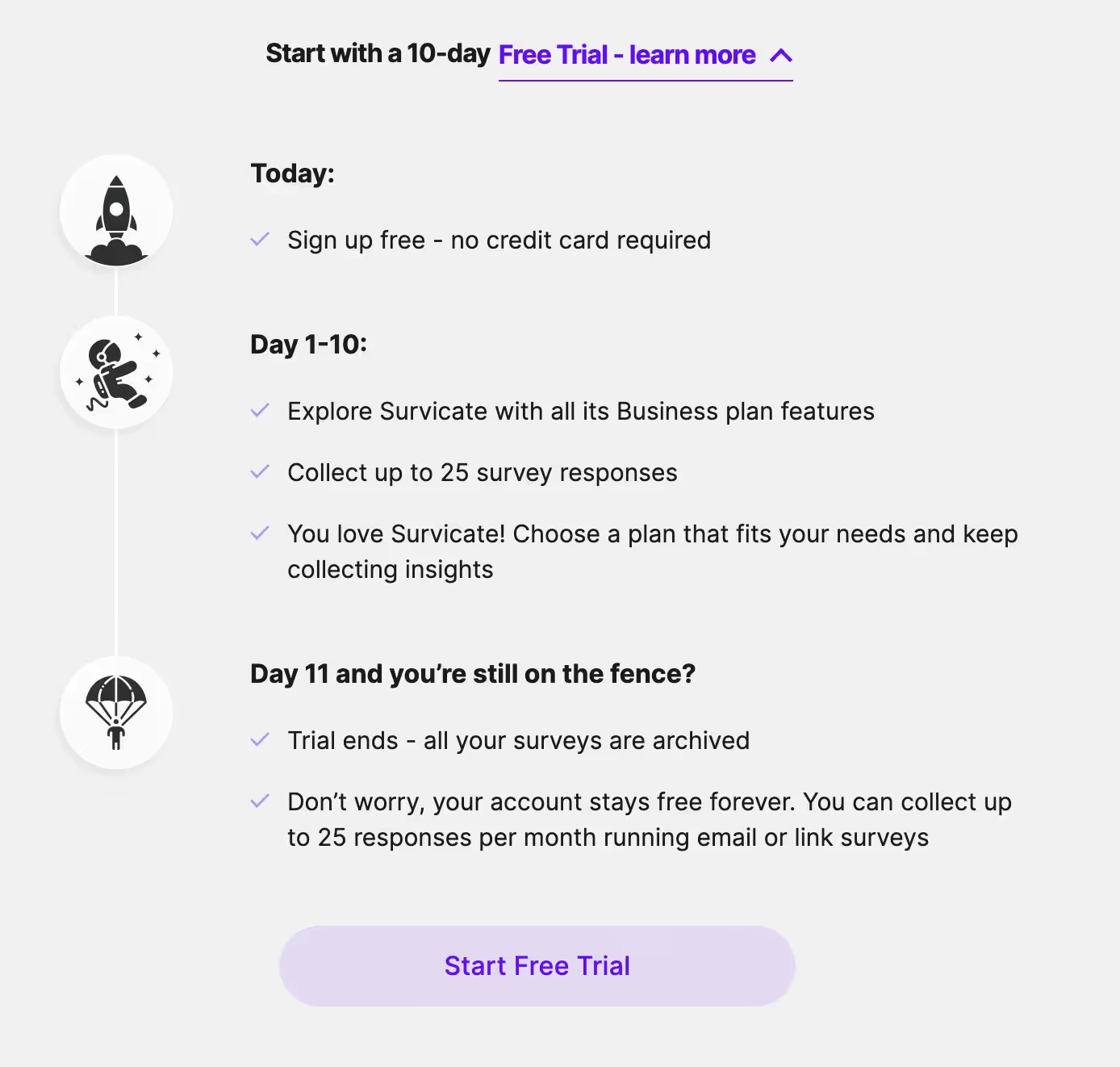
➡️ Trial duration impact
The length of the trial also influences the likelihood of conversion. Shorter trials of about 7 days may not provide enough time for users to fully experience the product, potentially leading to lower conversion rates.
Trials extending to 14 days strike a better balance, offering enough time for users to engage with the product while maintaining a sense of urgency. This duration has been shown to achieve conversion rates of approximately 60%.
It is essential to consider the complexity of your SaaS offering when deciding on trial length, as more intricate products may require a longer evaluation period for users to appreciate their full value.
Choosing the right trial structure and duration is key to maximizing conversions. By requiring credit card information and setting an optimal trial length, SaaS companies can encourage higher engagement and a greater likelihood of users transitioning to paid plans.
4. Referrals and Reviews
Referrals are a vital tactic in any SaaS marketing strategy, leveraging existing customers to attract new ones.
➡️ Boost referrals through incentives
Implement referral programs offering tangible benefits, like service upgrades or discounts, to motivate customers to recommend your SaaS product. These rewards should align with what customers value most about your sersvice, prompting them to share their positive experiences.
➡️ Maximize impact with SaaS review sites
Direct satisfied customers to leave reviews on platforms such as Trustpilot, G2 Crowd, or Capterra. Positive reviews on these sites can influence potential customers during their decision-making process. Use online surveys to regularly assess customer satisfaction or Net Promoter Score (NPS), identifying those most likely to advocate for your brand. Encourage these customers to contribute reviews, converting their satisfaction into a tool for driving new user acquisition.
By offering clear incentives for referrals and guiding happy customers toward influential review platforms, you can effectively expand your user base and enhance your B2B SaaS marketing.
5. Work on activation with easy signup + onboarding
An easy sign-up process means users can register quickly without unnecessary steps, using minimal and relevant information. Making account creation easy reduces friction and increases the likelihood of user activation. Pay special attention to the following aspects of this part of the customer digital journey:
Personalization: Tailor the onboarding experience based on user roles or industry to make it more relevant.
Milestone Celebrations: Acknowledge user progress with positive reinforcement, encouraging continued engagement.
Immediate Value: Ensure that users can achieve a 'quick win' with your SaaS product, reinforcing the decision to sign up.
Also, it's crucial to streamline customer onboarding in a SaaS company:
- Simplify the Process: Use clear, concise instructions and progress indicators to guide new users through setup.
- Educate Effectively: Offer interactive tutorials or product tours highlighting key features and benefits, catering to different learning styles.
- Set Clear Expectations: Communicate the value proposition upfront so users know what to expect and can quickly see the benefits of activation.
- Provide Support: Make assistance readily available with chatbots, FAQs, or live support to address any user concerns during onboarding.
Seamless sign-up and onboarding are integral to SaaS marketing strategies as they directly influence the customer's first impression and ongoing engagement with the product. A positive onboarding experience can significantly boost user activation rates, a crucial metric for SaaS growth and customer retention.
6. Paid Searches, PPC, Retargeting
Incorporating paid ads or PPC (Pay-Per-Click) advertising is a powerful tactic within a SaaS marketing strategy. These methods drive immediate traffic to your site, potentially leading to quick conversion gains. Retargeting further refines this approach by targeting users who have previously interacted with your brand, increasing the likelihood of conversion.
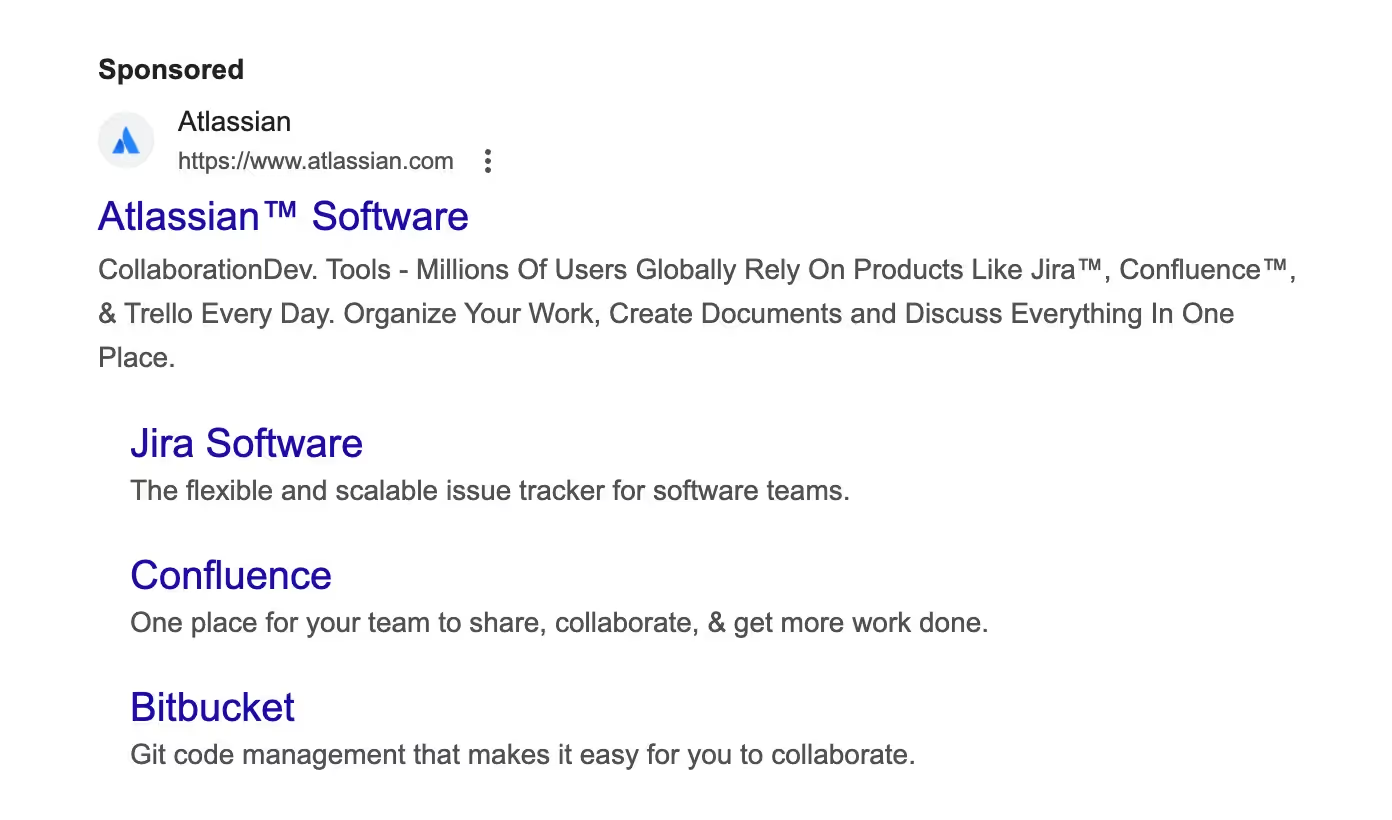
➡️ Execution and Focus Areas
When executing a PPC campaign, select the right keywords that align with your SaaS offering and customer intent. Craft compelling ad copy that resonates with your target audience and leads to a landing page optimized for conversion. Monitor and adjust bids to ensure your budget is spent efficiently, targeting high-performing keywords and ad placements.
➡️ Potential Gains and Risks
The potential gains of PPC and retargeting with Google ads include a rapid increase in qualified leads, heightened brand visibility, and accelerated customer acquisition.
However, these strategies come with risks, such as the possibility of high costs without guaranteeing conversion and the need for continuous investment to maintain traffic flow. To mitigate these risks, regularly analyze campaign performance, adjust strategies based on data-driven insights, and ensure your website and landing pages are optimized to convert the paid traffic effectively.
7. Webinars and Live Demos
Webinars and live demos are powerful elements of a SaaS marketing strategy, offering an interactive way to showcase your product's capabilities and directly engage with your audience in the customer journey.
➡️ How to start with webinars or live demos
Begin by identifying key features or pain points to address. Plan your content to be informative and engaging, focusing on solutions your product offers.
➡️ Encourage sign-ups
Offer exclusive insights or free resources as incentives for signing up. Use email marketing, social media, and your website to promote the event, highlighting the unique value attendees will gain.
➡️ Promote your event
Leverage social media ads, partnerships, and influencer collaborations to reach a wider audience. Create anticipation with teaser content and reminders as the event date approaches.
➡️ Follow up post-event
Send a thank you email to attendees with a recording of the session. Include a call to action for a free trial or consultation to continue the engagement.
Not all SaaS companies may need live demos. Still, they benefit complex or feature-rich products where showing the product in action can significantly aid in customer understanding and conversion. They provide a real-time interaction and Q&A platform, which can be pivotal in building trust and moving prospects through the sales funnel.
8. Community Building and Engagement
Creating a community around your SaaS offering can significantly enhance customer loyalty and product feedback.
➡️ Starting your community
Identify your target audience and where they spend their time. Begin engaging with them on those platforms and creating content that addresses their needs and interests.
➡️ Choosing the right platforms
The best platforms for building a SaaS community often include LinkedIn for professional networking, Twitter for quick updates and conversations, and dedicated forums or Slack groups for in-depth discussions.
➡️ Keeping the community engaged
Regularly provide value through insightful content, prompt responses to queries, and exclusive opportunities like beta testing new features. Organize virtual meetups or Q&A sessions to maintain high engagement levels.
A strong community fosters customer loyalty, provides rich insights into user needs, and supports customer retention. It can also act as an effective product development and improvement feedback mechanism.
Incorporating community building into your SaaS marketing strategy helps in customer retention and turns customers into advocates, who then contribute to organic growth through word-of-mouth and social proof.
9. Social Media Outreach
Effective social media outreach is essential for SaaS companies seeking to engage with their audience and expand their reach.
➡️ Crafting your message
Tailor your messaging to resonate with your target audience, focusing on their challenges and how your product provides solutions.
➡️ Select the right social media platforms
Choose platforms where your target customers are most active. LinkedIn is ideal for B2B interactions, while Twitter can be great for real-time engagement and updates.
➡️ Engage
Utilize social listening to join relevant conversations and respond promptly to questions and feedback. Share customer success stories and user-generated content to build trust and credibility.
➡️ Be consistent
Maintain a regular posting schedule and share various content types, including educational articles, product updates, and industry news.
A strategic approach to social media marketing can significantly contribute to your SaaS marketing campaigns by building brand awareness, nurturing customer relationships, and driving website traffic. Engaging content and active participation in social conversations can transform followers into leads and loyal customers.
10. Conversion Rate Optimization
Optimizing conversion rates is critical to a SaaS marketing strategy, focusing on turning visitors into paying customers.
➡️ Focus on website user experience
Ensure your website is intuitive and user-friendly. Simplify navigation and streamline the sign-up process to reduce friction points.
➡️ A/B Testing
Regularly test different elements of your website, including call-to-action buttons, landing page copy, and images, to determine what resonates best with your audience.
➡️ Personalization: Use data to personalize user experiences. Tailored content and recommendations can increase conversion rates by making users feel understood and valued.
➡️ Clear value proposition: Articulate your product’s benefits clearly and concisely. Visitors should immediately understand how your SaaS solution solves their problems.
➡️ Use Social Proof: Incorporate testimonials, case studies, and user reviews to build trust and credibility with potential customers.
Applying these conversion rate optimization techniques can lead to better performance of your B2B SaaS marketing. By focusing on the user experience and leveraging data for personalization, you can create a more compelling journey that encourages visitors to convert.
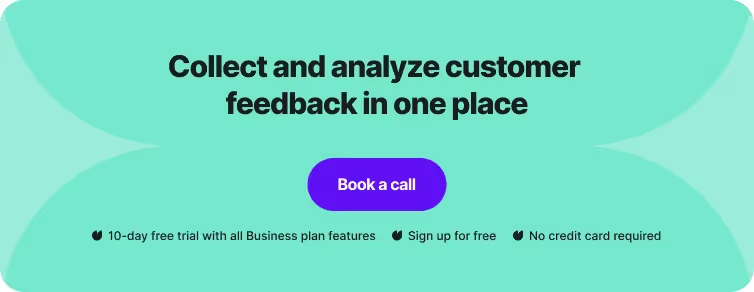
Analytics and KPIs for SaaS Marketing
In SaaS marketing, success hinges on your ability to track and understand vital metrics. Key Performance Indicators (KPIs) and analytics and reporting tools empower you to make informed decisions, driving business growth.
Key Performance Indicators (KPIs)
KPIs are quantifiable measures used to gauge the effectiveness of your SaaS marketing strategy. You should focus on:
- Customer Acquisition Cost (CAC): The total cost to acquire a new customer. It includes all marketing and sales expenses over a specific period.
- Customer Lifetime Value (LTV): The total revenue you can expect from a single customer account throughout the business relationship.
- Lead Conversion Rates: The percentage of leads that convert to customers, helping you evaluate the efficacy of your lead generation efforts.
- Churn Rate: The rate at which customers cancel or do not renew their subscriptions is crucial for understanding customer retention.
Analytics and Reporting Tools
Analytics and reporting tools provide the data you need to assess your KPIs. Let's look at some essential features you require:
- Performance Dashboards: Visual representations of your data, such as conversion funnels or cohort analysis, offer quick insights into performance trends.
- Segmentation Capabilities: Tools that segment data by customer behavior, acquisition channels, or product usage to identify patterns and opportunities for optimization.
- Real-Time Data: Updated information enabling you to react promptly to changes in your marketing campaigns or customer behaviors.
By employing these tools effectively, you can refine your SaaS marketing approach, ensuring you allocate resources to what's working and adjust what isn't—continually enhancing your strategy for better outcomes.
SaaS Marketing Budget Allocation
When formulating your SaaS marketing strategy, understanding how to allocate your marketing budget is pivotal. Your allocation depends on several factors, notably your company's size, revenue, and growth phase. Typically, you allocate between 7% and 15% of your annual budget to marketing if you aim for competitive market positioning.
Key Considerations:
- Growth Stage: Earlier stage companies may spend a higher percentage for more aggressive growth.
- Revenue: Often, a percentage of revenue guides the marketing budget, averaging around 10% of revenue.
- Company Size: Smaller companies could allocate a different proportion compared to larger ones due to different business dynamics.
Sample Budget Breakdown:
- Digital Marketing: 50% - Social media, SEO, and PPC campaigns.
- Content Marketing: 20% - Blogging, ebooks, webinars.
- Product Marketing: 15% - Product launches, feature updates, customer education.
- Events and Sponsorships: 10% - Conferences, trade shows, virtual events.
- Marketing Tools: 5% - CRM, automation tools, analytics.
Remember that these figures fluctuate based on your business's specific goals and needs. Regularly review and adjust your budget based on the performance metrics and objectives.
Level up your SaaS marketing strategy with Survicate
As we wrap up our journey through the top SaaS marketing strategies, remember that the goal isn't just to throw tactics at the wall and see what sticks. It's about choosing the right approach that resonates with your audience and aligns with your business goals.
And when understanding that audience, there's no better sidekick than Survicate survey software. With user-friendly surveys and insightful feedback tools, Survicate helps you tap into what your customers want and how they feel about your product.
Survicate's intuitive surveys and powerful feedback collection, unlock insights into what truly engages your users. Plus, the actionable analytics allow you to make data-driven decisions that can propel your marketing strategies forward. So why not give it a shot?
Get started with a bang and try Survicate for free on a 10-day trial that unlocks all the Business Plan features. It's time to get the answers and growth you need.
You might also be interested in:








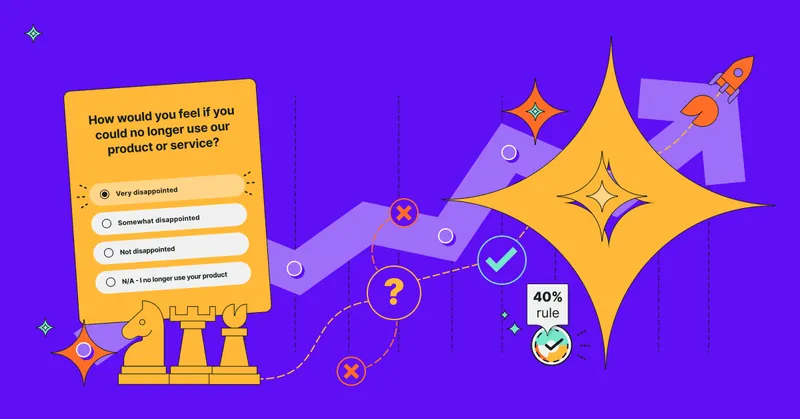

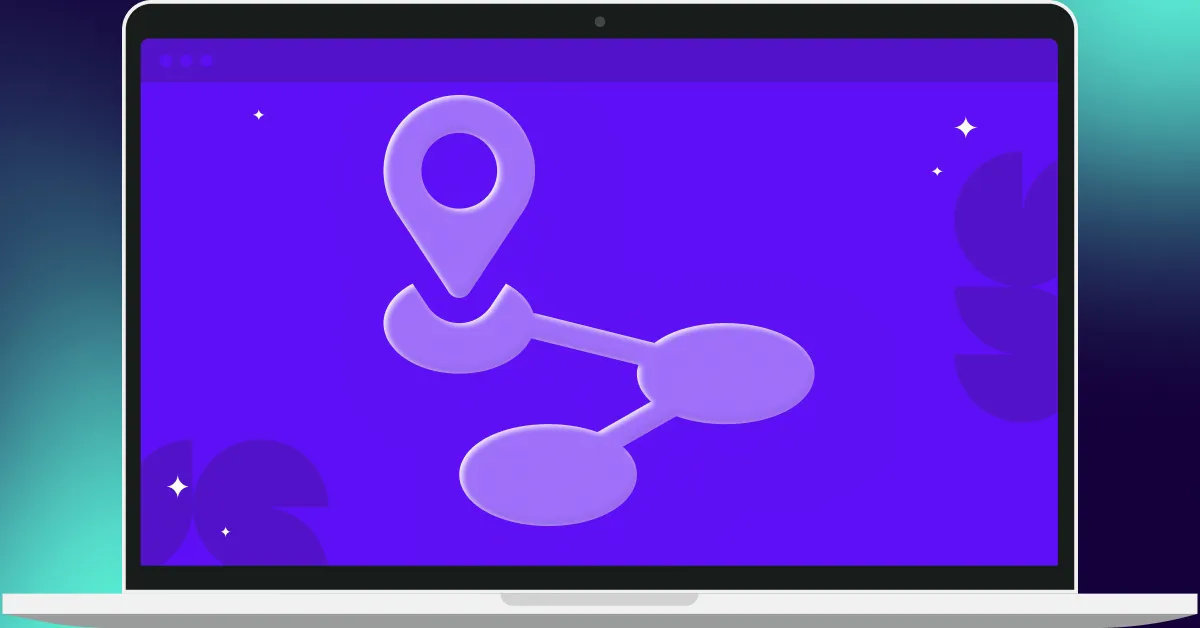
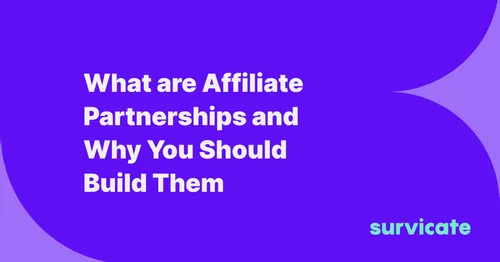

.svg)

.svg)



